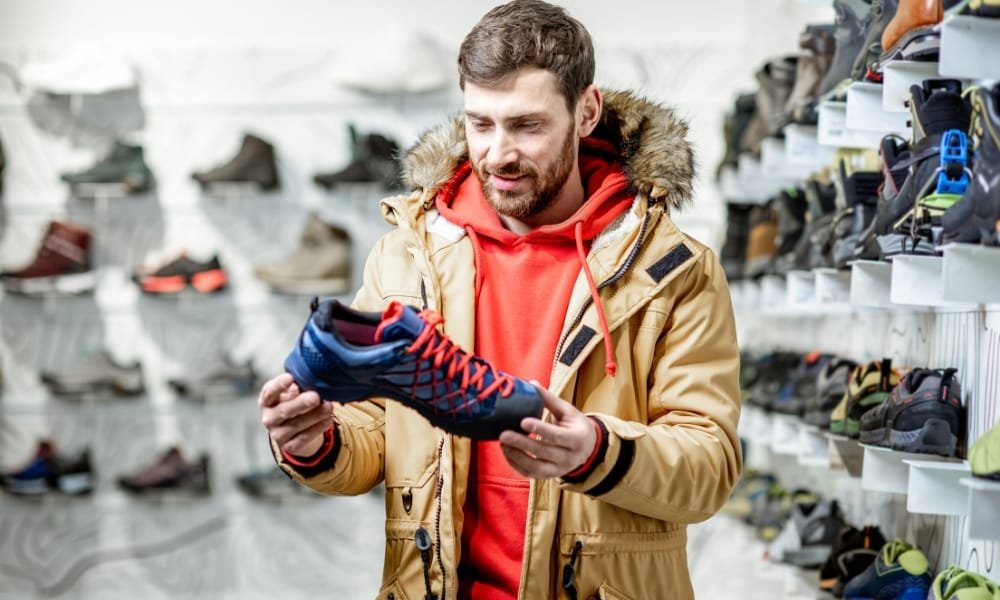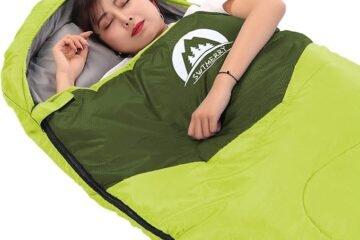The Ultimate Guide to Men’s Hiking Shoes: Comfort, Durability, and Style
Whether you’re a seasoned trailblazer or a casual weekend hiker, the right pair of hiking shoes can make all the difference in your outdoor adventures. Men’s hiking shoes come in a variety of styles, materials, and features, each designed to cater to specific needs. In this guide, we’ll break down everything you need to know about choosing the perfect hiking shoes for your next trek.
Why the right hiking shoes matter
Investing in the right hiking shoes is crucial for several reasons:
- Comfort: Long hikes can take a toll on your feet, and ill-fitting shoes can lead to blisters, soreness, or even injuries.
- Durability: High-quality hiking shoes are built to withstand rugged terrain and unpredictable weather conditions.
- Performance: The right shoes can improve your stability, grip, and overall hiking experience.
- Safety: Proper footwear reduces the risk of slips, trips, and falls on uneven terrain.
Types of men’s hiking shoes

Understanding the different types of hiking shoes will help you choose the pair that best suits your needs:
1. Trail shoes
Lightweight and specifically designed for well-maintained trails, trail shoes are ideal for casual hikers or those planning short day hikes. These shoes focus on flexibility and breathability, offering minimal protection against rugged terrains but sufficient grip for predictable, even paths. Their lightweight nature reduces fatigue, making them perfect for short, relaxed adventures.
2. Day hiking shoes
Day hiking shoes strike a balance between comfort and support, making them suitable for moderate terrains. They are slightly heavier than trail shoes and provide additional cushioning and protection for uneven ground. These shoes are designed for day-long hikes with a light backpack, ensuring stability and comfort without the bulk of heavy-duty footwear.
3. Backpacking shoes
Backpacking shoes are the workhorses of hiking footwear, built for heavy-duty trekking. They offer superior support, durability, and stability, making them ideal for long treks and challenging terrains. These shoes are designed to handle the weight of a heavy backpack, providing reinforced soles and robust materials to protect your feet during extended expeditions. They often feature high-cut designs for enhanced ankle support.
4. Waterproof hiking shoes
Waterproof hiking shoes are specifically designed to keep your feet dry in wet conditions. They feature materials like Gore-Tex or other waterproof membranes that create a barrier against moisture while maintaining breathability. These shoes are perfect for hikes involving water crossings, muddy trails, or rainy weather, ensuring your comfort and safety even in challenging environments. However, they might be less breathable than non-waterproof options, so consider your climate and hiking conditions.
Key features to look for in hiking shoes
When shopping for men’s hiking shoes, keep an eye on these essential features:
1. Fit and comfort
The fit of a hiking shoe is arguably its most critical feature. Ensure the shoes fit snugly around your foot without causing pressure points. Your toes should have enough room to move freely, and the heel should sit securely without slipping. Improper fit can lead to blisters, discomfort, or even injuries.
Look for features like padded collars that cushion the ankle and insoles designed for arch support. Some hiking shoes also come with removable insoles, allowing you to customize the fit with orthotics if needed.
2. Material
Leather: Full-grain leather is incredibly durable, offering excellent water resistance and protection against abrasive surfaces. However, it can feel heavier and may take longer to break in. Split-grain leather, combined with synthetic materials, offers a balance between durability and breathability.
Synthetic: Materials like nylon or polyester are lightweight, breathable, and quick-drying, making them suitable for warm-weather hikes. However, they tend to wear out faster than leather.
Gore-Tex or Waterproof Membranes: These materials provide advanced waterproofing capabilities while maintaining breathability. They are essential for hikes in wet or unpredictable conditions.
3. Outsole and traction
A high-quality outsole is crucial for maintaining stability and grip on various terrains. Look for soles made from durable rubber compounds with aggressive lugs designed for traction on loose gravel, wet rocks, or muddy trails. Vibram soles are a popular choice for their exceptional durability and performance.
Pay attention to the design of the lug pattern. Deeper and widely spaced lugs improve traction on muddy or uneven ground, while shallower lugs are better suited for well-groomed trails.
4. Weight
The weight of your hiking shoes can significantly impact your energy levels on long treks. Lightweight shoes are ideal for faster-paced hikes or less demanding terrains, as they reduce fatigue. However, heavier shoes typically offer better protection, support, and durability, making them a better choice for challenging hikes or carrying heavy backpacks.
5. Ankle support
Ankle support is particularly important when hiking on rocky or uneven terrain, or when carrying a heavy load. Mid-cut hiking shoes provide moderate support, making them suitable for most day hikes. High-cut shoes offer superior stability and are recommended for rugged terrains or multi-day backpacking trips.
Look for features like padded collars and reinforced uppers that enhance both comfort and stability around the ankle.
How to choose the right hiking Shoes
1. Consider your hiking style
Assess your hiking habits to determine the type of shoes that will suit your adventures. Are you a casual hiker tackling well-maintained trails, or an avid backpacker venturing into rugged terrains? Casual hikers may prioritize lightweight trail shoes, while backpackers should consider durable and supportive backpacking shoes.
2. Test the fit
Visit the store in the afternoon or evening when your feet are naturally slightly swollen—this mimics how they might feel after hours of hiking. Wear the same socks you plan to use on your hikes to get an accurate fit.
Walk around the store, climb any test inclines, and ensure there’s no slipping in the heel or pressure points. Your toes should have enough space to wiggle without feeling cramped.
3. Check reviews
Research online reviews and ratings for the shoes you’re considering. Pay attention to feedback on comfort, durability, and performance in different conditions. Look for consistent positive feedback and watch out for common issues reported by other users.
4. Prioritize your needs
Determine the conditions you’re most likely to encounter on your hikes. If you frequently hike in wet, rainy areas or cross streams, opt for waterproof hiking shoes. If your trails are hot and dry, prioritize breathable materials to keep your feet cool and comfortable. Remember, no single shoe fits all situations, so match the features to your specific hiking environment.
Related Post: What is Hiking?
Related Post: Hiking Shoes
Maintenance tips for hiking shoes
Proper maintenance is key to extending the life of your hiking shoes and ensuring they perform well on every adventure. After each hike, clean them thoroughly using a soft brush and mild soap to remove dirt and debris. Always let them air-dry naturally, avoiding direct sunlight or high heat, which can weaken the materials. To maintain water resistance, regularly apply waterproof sprays or wax as recommended by the manufacturer. Finally, store your hiking shoes in a cool, dry place to prevent mold or mildew, keeping them ready for your next outdoor trek.
Related Post: What to pack in your hiking backpack
Related Post: Hiking in Seville: exploring nature beyond the city
Top Brands for men’s hiking shoes
Here are some reputable brands known for their high-quality hiking shoes:
- Salomon: Renowned for innovative designs and excellent traction.
- Merrell: Offers a great balance of comfort and durability.
- Columbia: Known for affordability and reliable waterproofing.
- The North Face: Combines style with performance.
- Keen: Famous for wide-fit options and robust construction.
Related Post: What to bring on a hiking trail
Related Post: What is the most beautiful hiking route in Aracena?
Common mistakes to avoid
Avoiding common mistakes can make all the difference in your hiking experience. Always break in new hiking shoes with short walks before tackling a long trek to prevent discomfort and blisters. Don’t underestimate the importance of proper socks—moisture-wicking, cushioned options provide essential comfort and blister prevention. Lastly, while stylish shoes may catch your eye, prioritize functionality and features like support, grip, and durability to ensure performance and safety on the trails.
Final thoughts
Choosing the perfect men’s hiking shoes involves balancing comfort, durability, and functionality. By understanding your hiking needs and paying attention to key features, you can find a pair that’s just right for you. Remember, the right shoes can elevate your outdoor experience, keeping you comfortable and safe on every adventure.



0 comentarios